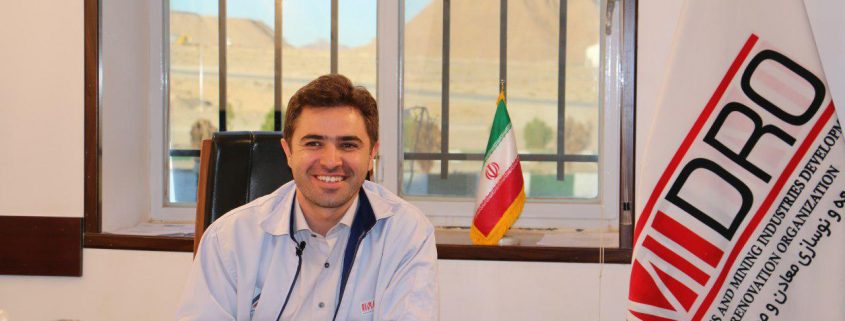The Latest Status of the Mehdiabad Mining Project
Exploration and downstream industries; the lost circles of zinc industry
Amin Safari as Manager of Mehdiabad Mining Complex, said in a talk with Borse News regarding the latest status of the Mehdiabad mining project: The Mehdiabad mininig project, with annual production capacity of 800 thousand tons of zinc concentrate of 35 %, is defined in three phases, the first phase with an annual production capacity of 200 thousand tons by the end of the year 98, and two other phases will be exploited in the next four years.
He added that : " Due to the implementation of operation activities in the Mehdiabad Mining Complex there has been some restrictions imposed by the sanctions and the import problems of machinery and equipment. Of course, the conditions are relatively stable, and it seems that we will not have particular problem in operation of first and second phases of the mine. But operation of the third phase of the mine is more complexity and is currently in the study stage.
Safari responded to the question " will the operation of the Mehdi abad mine meet the shortage of raw materials in zinc industry for producting zinc alloy?" and said:" The production capacity of zinc in the country is 450 thousand tons; however, companies do not produce with their full capacity because of the shortage of raw materials, and in 2018 the total production of the country was about 190 thousand tons. The Anguran Mine capacity is limited and does not meet all the needs of the domestic industry. Importing of raw materials due to its high volume and transportation costs … has its own problems. Hence, operation of the Mehdiabad Mine is of great importance". For the production of one ton of zinc alloy, about 3 tons of concentrate is required with a grade of 35 % of the Mehdiabad Mine; it can be said that the volume of raw materials required by the industry will be approximately equal to the capacity of Mehdiabad production; But the important point is that half of the Mehdiabad product is sulfur and the other half is oxidized. (Phase 1 and 2 of Sulfide ore and Phase 3 of Oxidized ore). Therefore, the soil of the Mehdiabad Mine process in terms of processing technology is not exactly in line with the needs of the industry, and probably the manufacturing industry should gradually align their production lines with the mining sector.
Manager of Mehdiabad Mining Complex in relation to prediction of the global supply and demand process "Zinc" stated: " Glinkor Inc., the world's largest producer and distributor of Zinc, controls the prices by possessing mines and supply management. However, the world's mineral reserves are limited, and the Zinc usage is increasing in the world. Due to the increasing demand for steel and galvanizing due to world economic growth, the demand for zinc seems to be heavier than the supply in the future. So global prices of Zinc may have a short-term fluctuation in the short term, but global prices are unlikely to decline over the next five years ".
He added: "With regard to the capacity of the mineral processing industry and the presence of a poly-metal belt and the probability of new mineral deposits in the event of exploration, investment in the exploration and downstream industries is justified. With regard to the vacuum in the downstream industry, per capita consumption of zinc in our country is lower than the global average, and currently about 70% of the Zinc produced on the domestic market should be exported. Developing downstream industries will also increase GDP, in addition to job creation and added value. With regard to the development potential of the two exploration and downstream industries, IMIDRO strives to eliminate the problems of the Zinc industries without direct intervention, and the country's balance of payments is being pursued. Of course, the development of the exploration and downstream industries will depend on supporting this area and facilitating investment conditions ".



